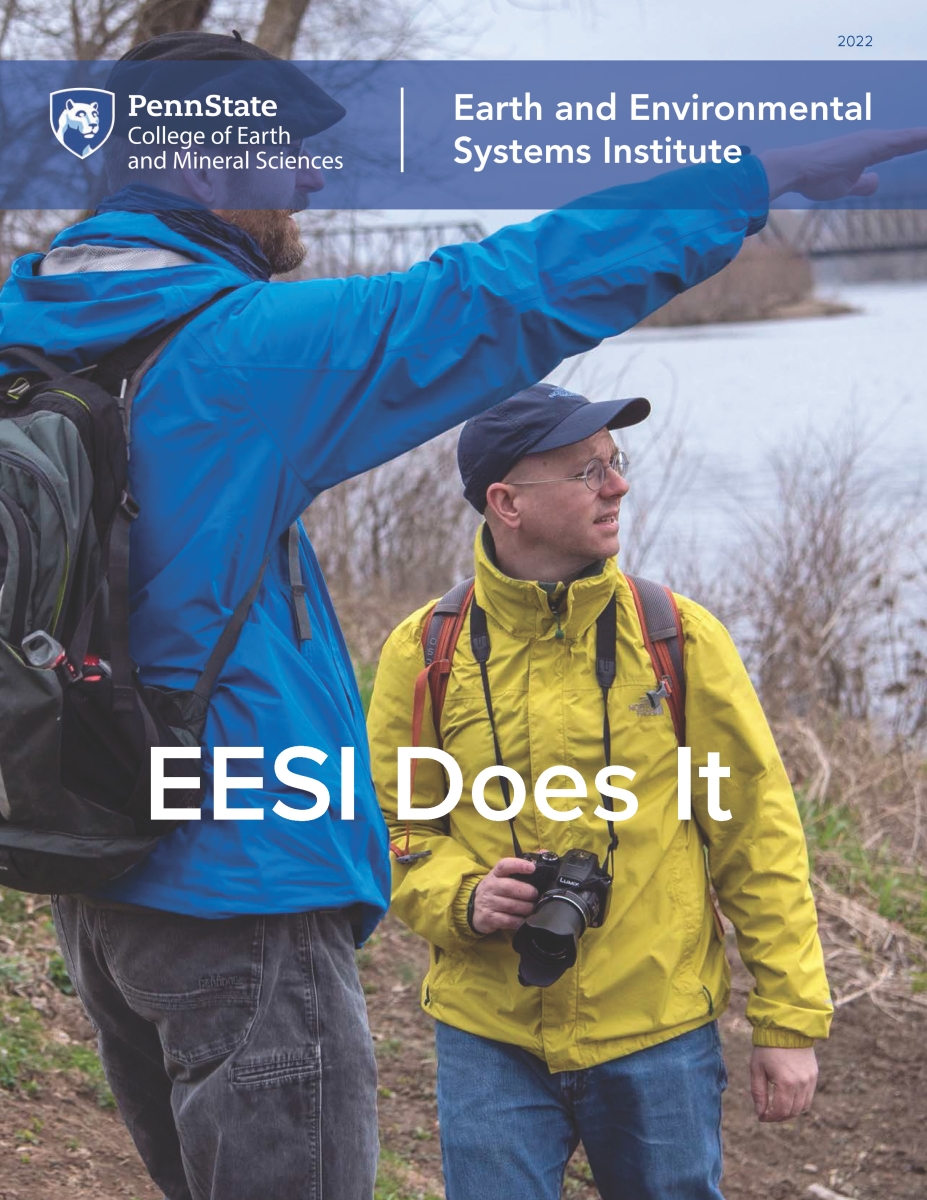 Stacey Olson
Stacey Olson
October 2017
Their research focuses on a Native America tribal nation's forested home in Wisconsin, or on leaf fossils found in remote Patagonia, or perhaps even right in Penn State's backyard. But they have at least one thing in common – they are the 2017-18 Earth and Environmental Scholars.
Stacey Olsen (Geography), Gabriella Rossetto (Geosciences) and Perri Silverhart (Geosciences) have been selected as this year's scholars. The scholarships are offered annually to graduate students to form connections between department in the College of Earth and Mineral Sciences, and to increase student diversity.
 And diverse is a good way to describe their research.
And diverse is a good way to describe their research.
Stacey Olsen is studying the impact that invasive species like the Emerald Ash Borer could have on the forests maintained by the Menominee people – a Native America tribal national in Wisconsin.
Her work is part of a National Science Foundation funded project to study cultural and economic challenges climate change will play on the reservation, and how it could inform decision-making about forest management.
"I was drawn to the project for its interdisciplinary nature, and because it also incorporates indigenous knowledge and values systems," Olsen said.
Olsen uses ecological modeling software that can predict impacts of biological disturbances on the forest and analyze them against other factors, like a changing climate.
 Gabriella Rossetto's work finds her in far-away South America. She is studying the monkey puzzle tree, an endangered type of evergreen described as a "living fossil" due to the longevity of the species.
Gabriella Rossetto's work finds her in far-away South America. She is studying the monkey puzzle tree, an endangered type of evergreen described as a "living fossil" due to the longevity of the species.
"The ones that live in South America are very different than the fossil record in South America," she said.
"So we're trying to understand the evolution of this group."
Rossetto did her field work in March and then returned to Patagonia in July to work at a local museum that acts as a depository for the many excellent fossils found nearby.
"The specific fossils I'm looking at here first published in 1938, and no one has really looked back at them," she said. "So I'm building on that."
Perri Silverhart's work is considerably closer to home. She is working with the Susquehanna Shale Hills Critical Zone Observatory project, a NSF-funded network examining the thin outer layer of Earth that supports all human life.
There, cross-disciplinary researchers study everything from the highest vegetation to the deepest underground fresh water, and almost anything in between.
"I really enjoy the CZO structure for the interdisciplinary way that it draws from different fields and brings scientists from across disciplines together," she said.
Silverhart is working on a new site at the Penn State CZO exploring how things like deforestation and agricultural have changed or effected hillslope sediment transport.
"I'm interested in seeing if I can fingerprint evidence for that in this part of the state," she said.


